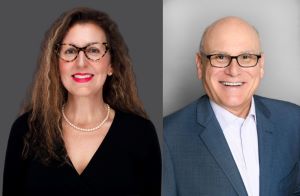Tradition and intuition are no longer sufficient to address the varied demands of pupils in the fast-paced educational environment of today. School administrators are using analytics and evidence more and more to guide their plans. Data-driven school improvement is a potent idea at the core of this change.
Teachers may monitor student progress, identify the underlying causes of poor performance, and provide resources where they are most needed by employing data efficiently. This blog delves deeply into the meaning of data-driven school improvement, its importance, and how K–12 institutions may implement it to foster fair, long-lasting academic success.
1. What Is Data-Driven School Improvement?
The deliberate use of data—academic, behavioral, attendance, and more—to inform school decision-making is known as data-driven school improvement. Instead of making assumptions, this method uses evidence analysis to find gaps, establish objectives, make adjustments, and track outcomes.
Data Types Frequently Used:
- Data on student accomplishment (e.g., grades, test scores)
- Behavioral information (e.g., SEL metrics, discipline referrals)
- Participation and enrollment
- Evaluations and performance of teachers
- Input from stakeholders (e.g., staff, student, and parent surveys)
By converting data into useful insights, this approach assists schools in providing better services to their communities and students.
2. Why Data-Driven School Improvement Matters
Today’s educational problems—disparities in discipline, teacher attrition, decreased engagement, and achievement gaps—need more than simple fixes. Schools require focused, empirically supported solutions. At that point, data becomes essential.
Advantages of Making Decisions Based on Data:
- Accuracy: Focus interventions on the most vulnerable kids and classes.
- Transparency: Use open data to foster trust with workers and families.
- Accountability: Monitor the advancement of financial results and strategic goals.
- Equity: Recognize and resolve differences in access and success.
- Continuous Improvement: To improve procedures, use cycles of analysis and reflection.
Schools can increase their agility, responsiveness, and alignment with the varied needs of their students by adopting data-driven school improvement.
3. Laying the Foundation: Creating a Data-Driven Culture
Schools must first develop a culture that values and comprehends data before embracing dashboards and spreadsheets. Even the best facts can be misunderstood or disregarded in the absence of trust, cooperation, and a common goal.
How to Establish a Data Culture:
- Make Your Goals Clear: Present data utilization as a support tool rather than a spying tactic.
- Establish Transparency in Data Collection, Sharing, and Use to Foster Trust.
- Invest in Training: Assist staff members and educators in becoming data literate.
- Celebrate Your Successes: Make use of data to show progress and acknowledge hard work.
- Encourage cooperation by forming PLCs or data teams to examine and act upon findings.
By moving the emphasis from criticism to improvement, a positive data culture enables educators to make well-informed decisions without worrying about who will be held accountable.
4. Key Components of a Data-Driven School Improvement Plan
A data-driven, well-organized process is followed by a successful school improvement plan. The goal is to go from gathering data to taking meaningful action.
Elements of a Powerful Strategy:
- Gathering and Analyzing Data
To find trends, compile pertinent data and break it down by teacher, grade, or student group.
- Evaluation of Needs
To ascertain the factors influencing the data trends, do root cause analysis.
- Establishing Objectives
Establish quantifiable goals in line with district and school priorities.
- Planning of Action
Determine the precise tactics, materials, and execution roles.
- Progress Tracking
Track and make adjustments in real time by using interim data, such as formative evaluations and benchmarks.
This cycle of investigation guarantees that data drives actual change rather than merely existing in reports.
5. The Role of Leadership in Data-Driven Improvement
When it comes to establishing and maintaining data-driven processes, school leaders are essential. They must promote openness, encourage teamwork, and keep a laser-like focus on progress.
Effective Leadership Techniques That Promote Achievement:
- Establish expectations for routine decision-making and data review.
- Establish structures, such as time allotted for PLCs or data teams.
- Distribute resources, such as coaching, training, and technology.
- Promote reflection by assisting groups in asking “what’s working, what’s not, and why?”
- Encourage equity by making sure that decisions are made using disaggregated data for all student groups.
Schools that are responsible and flexible are fostered by leaders that place a high priority on data-driven school reform.
6. Professional Development for Data Use
Teachers play a major role in improving schools. However, a lot of teachers are not trained in the proper analysis and use of data. It is imperative to make investments in professional development (PD).
Successful PD Strategies:
- Workshops on Data Inquiry: Teach participants how to analyze and act upon data.
- Job-Embedded Coaching: Assist educators with the use of data in planning and teaching.
- Team analysis and solution design are facilitated by collaborative data cycles.
- Technology training: Make sure you are at ease using visualization tools and data platforms.
Teachers are more likely to use data to guide instruction, differentiate support, and promote student success when they feel competent and confident.
7. Tools and Technology for Data-Driven Schools
Schools nowadays have access to strong digital technologies that speed up, simplify, and improve the accuracy of data gathering and analysis.
Frequently Used Instruments:
- PowerSchool and Infinite Campus are examples of student information systems (SIS).
- Data Dashboards: Google Data Studio, Tableau, and Schoolzilla
- Google Classroom and Canvas are examples of learning management systems (LMS).
- Tools for Surveys: SurveyMonkey and Panorama Education
The secret is to make sure that data is actionable, not just accessible, and to smoothly incorporate tools into current workflows.
8. Equity Through Data: Closing Gaps and Increasing Access
The ability of data-driven school improvement to identify and resolve disparities is one of its biggest promises. Schools can determine where and why discrepancies exist by breaking down data by student attributes such as language, gender, and race.
Equity-Centered Measures:
- Keep an eye on opportunities gaps in special education, discipline, and advanced academics.
- To find students who are at risk, use early warning systems.
- Engage families by providing easily accessible and transparent data.
- Develop focused interventions to help marginalized communities.
- To guarantee genuine development, monitor the effects of equitable efforts.
To guarantee that every student succeeds, equity must be ingrained in data methods rather than merely existing as a value.
9. Real-World Examples of Data-Driven Success
Example 1: Long Beach Unified School District, CA
Principals at Long Beach Unified meet once a month to discuss performance data as part of the school’s data-driven culture. Student performance grew steadily, especially for low-income and English-learning students.
Example 2: Syracuse City School District, NY
Syracuse tailored interventions for pupils who were absent on a regular basis using data dashboards. There were quantifiable improvements in academic achievement and a decrease in absenteeism in the district.
Example 3: Charlotte-Mecklenburg Schools, NC
To increase graduation rates, the district employed predictive analytics. Record-high completion rates resulted from schools implementing tailored support strategies for kids who were at risk.
10. Common Pitfalls to Avoid in Data-Driven School Improvement
Data can be underutilized or exploited despite its advantages. By avoiding typical blunders, you may make sure that your efforts to grow remain morally and practically sound.
Be Aware Of:
- Data Overload: An excessive amount of data can be paralyzing and confusing.
- Misinterpretation: Make sure employees know how to interpret and put data in context.
- Punitive Use: Steer clear of utilizing data only for assessment or punishment.
- Equity Blindness: Always break down and examine data for implications on equity.
- Absence of Follow-Through: For data to be useful, it must result in prompt action.
Data is only as strong as the systems and mindset that surround it.
Conclusion: Turning Insight into Action
Data-driven school improvement provides a way forward in an era where scrutiny of educational results is growing. Schools can improve their responsiveness, equity, and efficacy by establishing plans based on solid evidence.
But gathering data isn’t the only goal. Turning insight into action—creating a culture where data is used strategically, cooperatively, and ethically to improve results for all students—is what makes a real difference.
As a principal, educator, district administrator, or legislator, adopting data-driven strategies can help your school community reach its full potential and expand more quickly. Although the process takes time, the end results—stronger schools, empowered teachers, and flourishing students—make the effort worthwhile.
















 We’ve created a graphic to describe how any team should make the most of its time. The most senior teams in an organization should focus on the top-right functions – collaboration and creativity – with teams lower on the hierarchy addressing the less complex functions.
We’ve created a graphic to describe how any team should make the most of its time. The most senior teams in an organization should focus on the top-right functions – collaboration and creativity – with teams lower on the hierarchy addressing the less complex functions.